Weishan Ancient City Travel in Rain and Rain
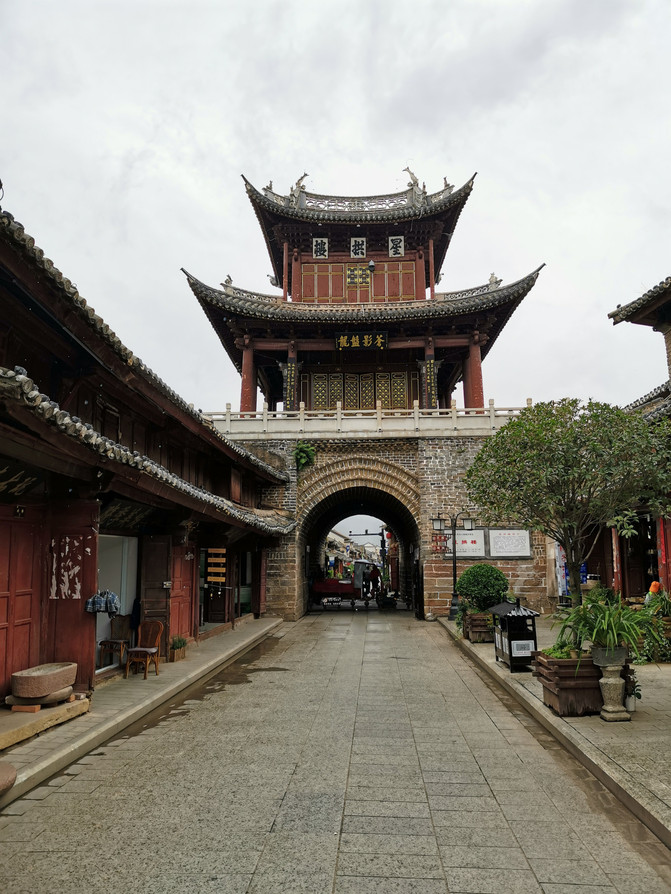
At noon on October 21, 2020, I went from Donglianhua Village, Weishan County, Dali City, Yunnan Province to a restaurant near Gongchen Tower at the north gate of Weishan Ancient City for lunch, and then walked through Weishan Ancient City in the drizzle.
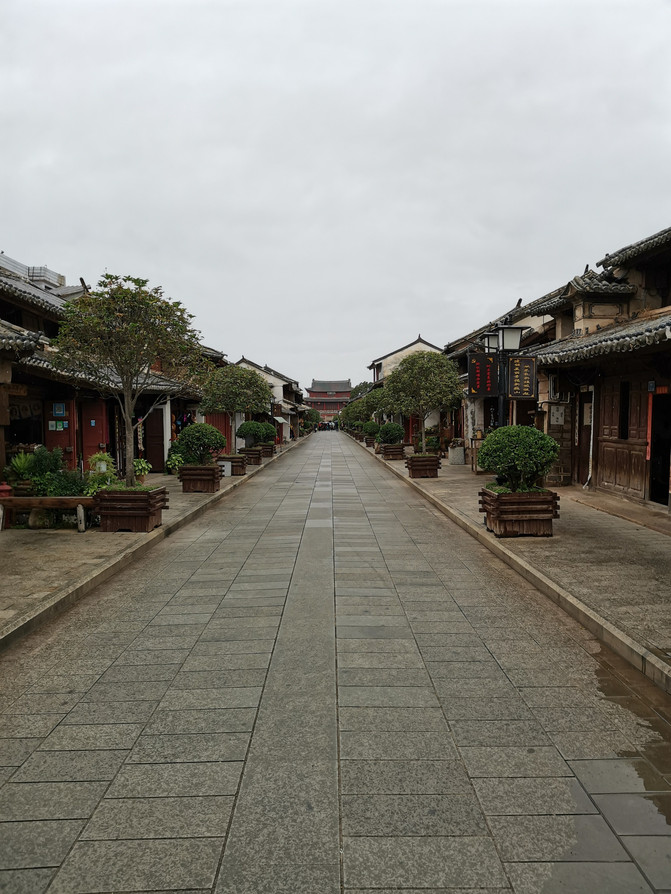

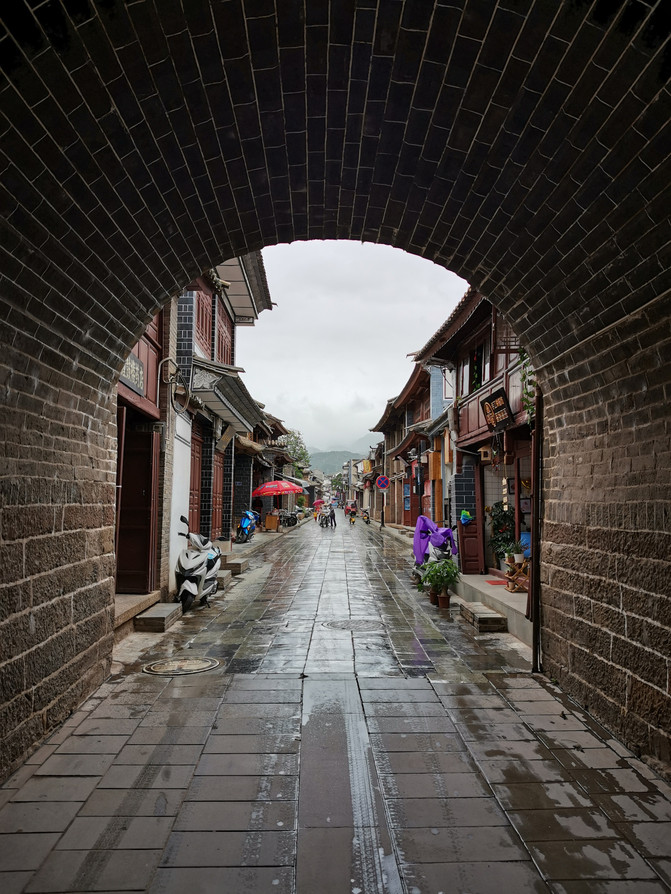
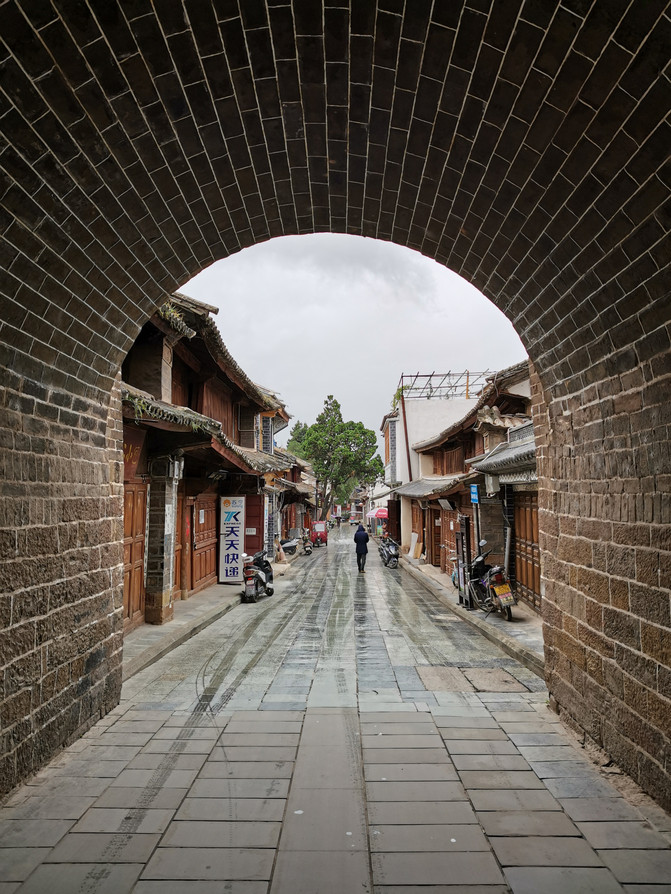
Weishan Ancient City was built in the 22nd year of Hongwu of the Ming Dynasty (1389) and has a history of more than 600 years. "Menghua Zhi Gao·City Zhi Zhi" records: "(Weishan) city is like a seal, and the Zhongjian Wenbi Building is the seal handle." Extending from Wenbi Building as the center to four directions: east, west, north and south are the four main streets of the ancient city. The ancient city of Weishan is shaped like a chessboard, with 24 streets and 18 alleys dotted and criss-crossed. It is a typical "chessboard" city layout in the Ming and Qing Dynasties style. Today, the three ancient city buildings in the east, west and south of Weishan Ancient City have been destroyed. Only the North City Gate Tower and the Wenbi Building (Xinggong Building) in the center of the city have survived. The streets of the ancient city still maintain relatively complete patterns of the chessboard when the city was founded more than 600 years ago. It is one of the best-preserved ancient buildings of the Ming and Qing Dynasties in China. Compared with the newly built ancient city of Dali, the ancient city of Weishan is an ancient city in the true sense of the word.
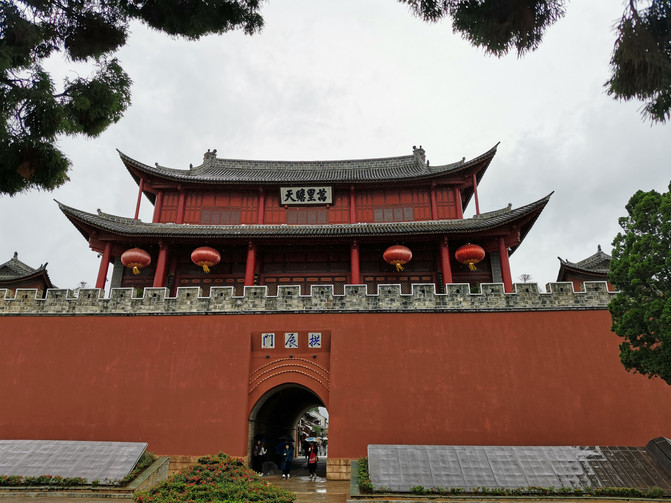
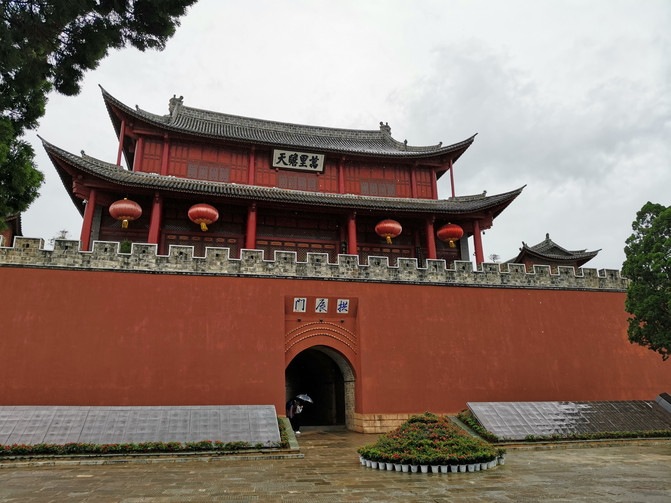
Come to Gongchen Tower at the north gate of Weishan Ancient City. This tower built on a brick city wall more than 20 feet high was originally built in the 22nd year of Hongwu of the Ming Dynasty (1389). It is now a building dating from the Yongli period of the Ming Dynasty. However, it is said that the tower broke out in the early morning of January 3, 2015, and the current tower should have been renovated.

Gongchen Tower is a civil structure. The lower tongue city wall is 8.3 meters high, the building is 23.4 meters high, 41.7 meters long and 24.8 meters wide. It is supported by 28 large columns embracing each other and protrudes from the building on all sides, making it majestic and magnificent.

On the south side of the upper eaves of the tower hangs a giant plaque titled "Kuixiong Six Edict" inscribed by Kang Ru, the Tongzhi of Menghua Prefecture in the 36th year of Qianlong of the Qing Dynasty (1771); on the north side hangs a large plaque titled "Looking at the Sky from Thousands of Miles" written by Huang Dahe, the Tongzhi of Menghua Prefecture in the 50th year of Qianlong of the Qing Dynasty (1785). I wanted to climb Gongchen Tower and overlook the mountains and rivers overlooking Weishan Dam, but unfortunately the small doors on the east and west roads were closed.

Leaving Gongchen Tower, heading south into the ancient city of Weishan, you can see that the houses on both sides of the south and north main axes of the ancient city completely preserved the architectural styles and styles of the Ming and Qing dynasties.
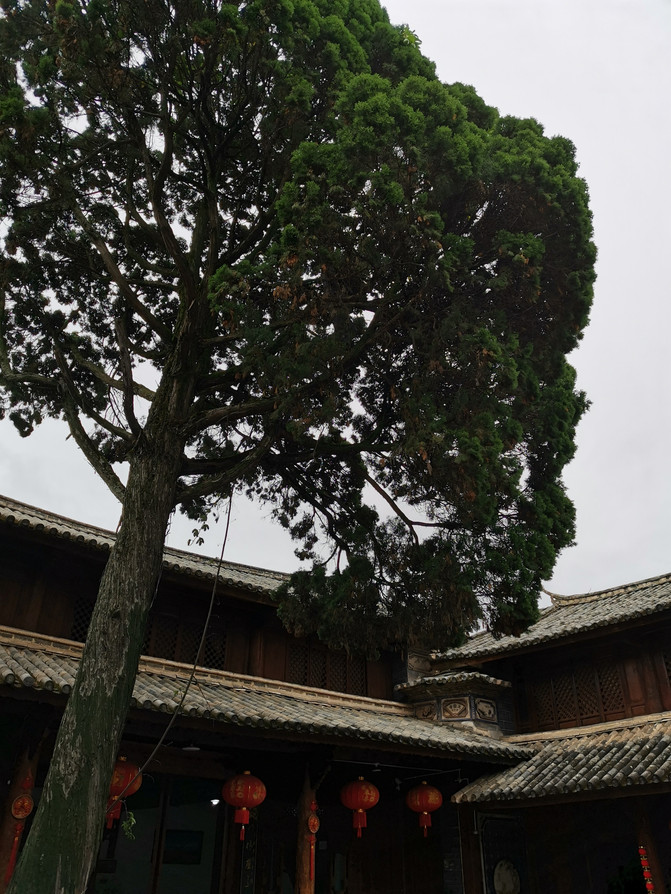
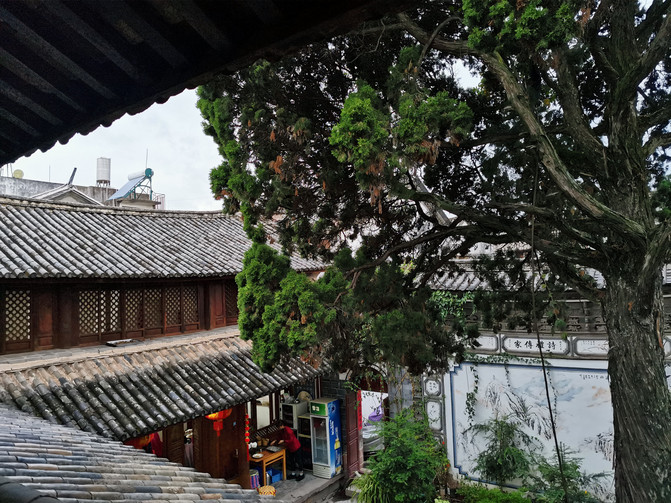
Most of the houses in the ancient city are courtyard-style, reflecting the common civil structural architectural characteristics of Dali houses with "three squares and one illuminated wall" and "four in five patios". Most of the houses face south and face about 15 degrees south by west, obviously taking into account the best lighting angle needed to combine the local "four-in-five patio" building.
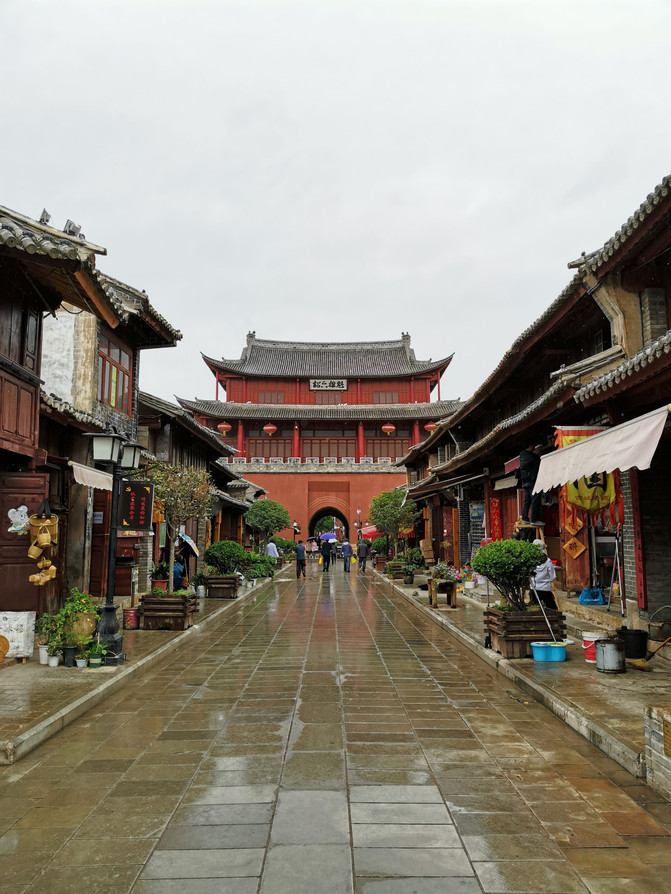
Walking on the stone street, which has been polished by time and washed by rain, the ground floor of the buildings on both sides of the street is all shops, and the facades facing the street are all wooden. The shops have no eye-catching fashion signs. Most of the things sold in the shops are daily necessities for residents. At the corner of the street, fragrant flowers and trees can be seen in the simple and quiet courtyard. This is an ancient city with a modest, gentle and elegant atmosphere of life.
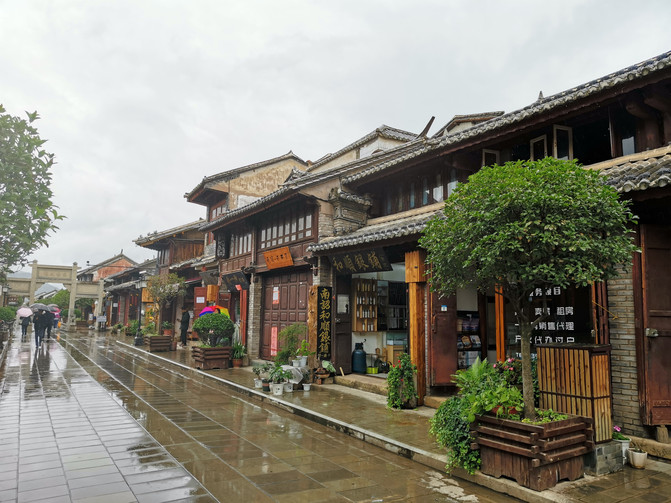
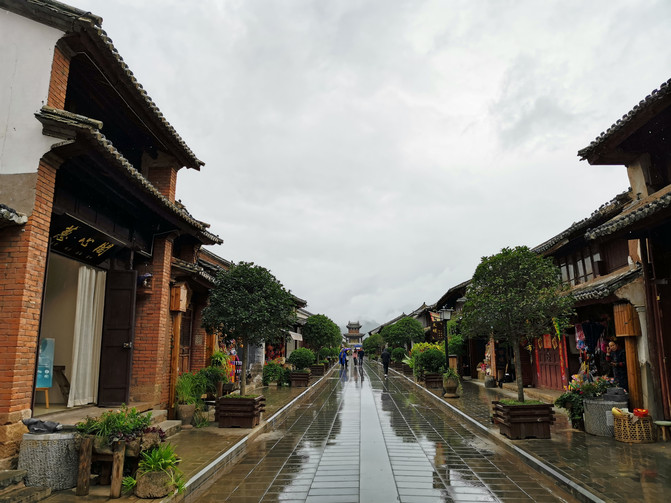
Weishan is the birthplace of Nanzhao State. In the twenty-third year of Zhenguan of the Tang Dynasty (649), the Yi ancestor Xinuluo established Nanzhao State here. It lasted for more than 13 generations and 200 years. Although the capital moved to Dali more than ten years after the founding of Nanzhao, the roots of Nanzhao lie in Weishan. Weishan is also one of the areas in Yunnan where the Tusi system has been implemented for the longest time. There were cottages in the early Tang Dynasty. Since the Yuan Dynasty, a Tucheng was built and transformed into a Brick City in the Ming Dynasty. In the inheritance of ancient culture, Weishan City has a temple, a shop, a snack, and a street, all of which bear traces of history, as if they were all in memory, and the style remains the same.
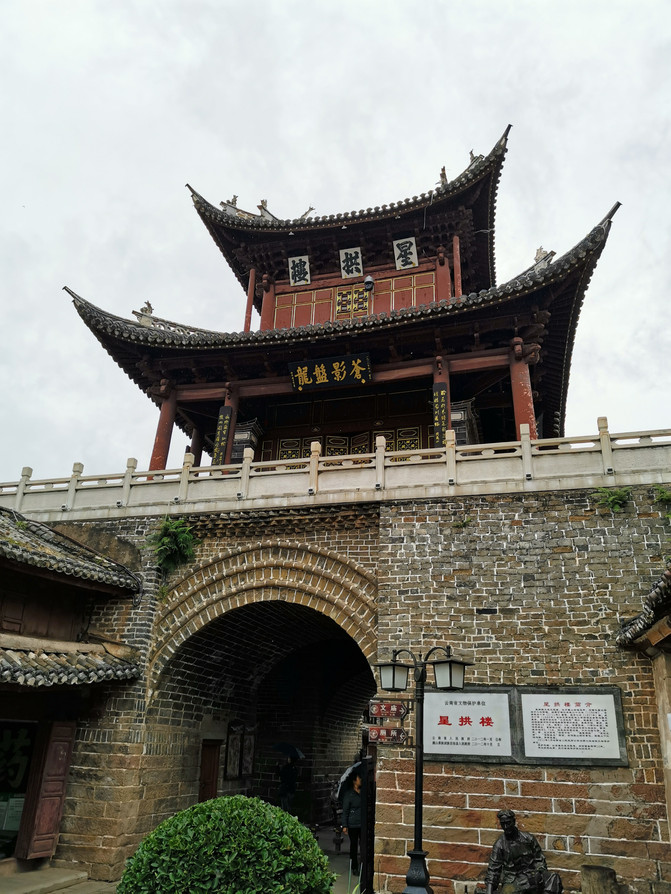
Come to Xinggong Tower located in the center of Weishan Ancient City. This building is also known as Wenbi Tower. Together with Beichengmen Gongchen Tower, it has become the landmark building of Weishan Ancient City.
I wanted to climb the building and look around, but the small door was also closed, so I failed.
Weishan Ancient City has many ancient buildings in the Ming and Qing Dynasties, including Confucian Temple, Guandi Temple, God Temple, Wenhua Academy, Taiyang Palace, Lengquan Temple, etc. These ancient buildings with superb craftsmanship, rigorous structure, and carved beams and painted buildings reproduce the prosperity of the ancient city of Weishan in the past. superb architectural art. Experts and scholars believe that "the ancient city of Weishan is so complete that it is rare in Yunnan and even the country." I wanted to take a closer look at the whole picture of Weishan Ancient City one by one. As the time for the team to gather was up, I turned back to Gongchen Tower to bid farewell to the ancient city of Weishan.
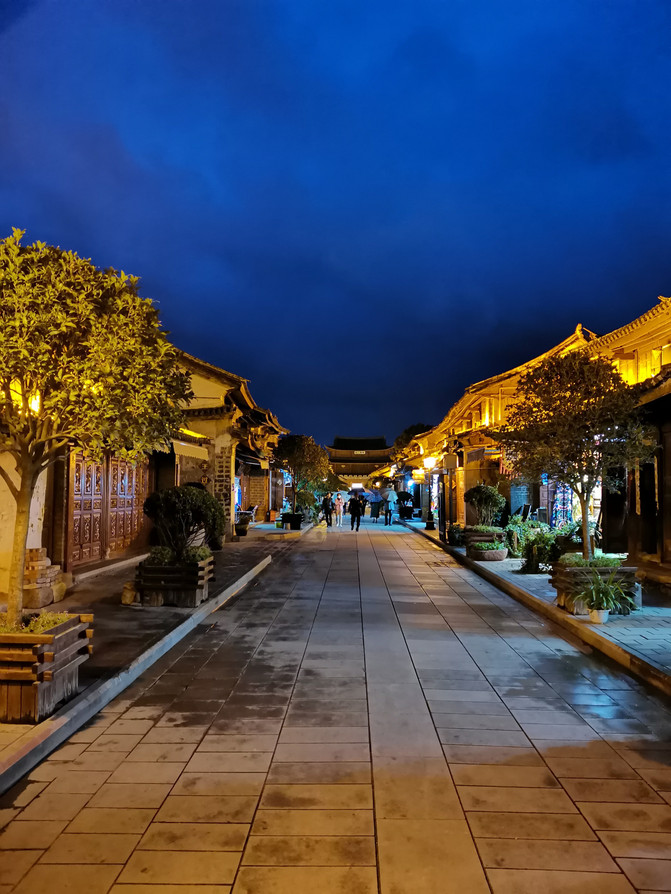

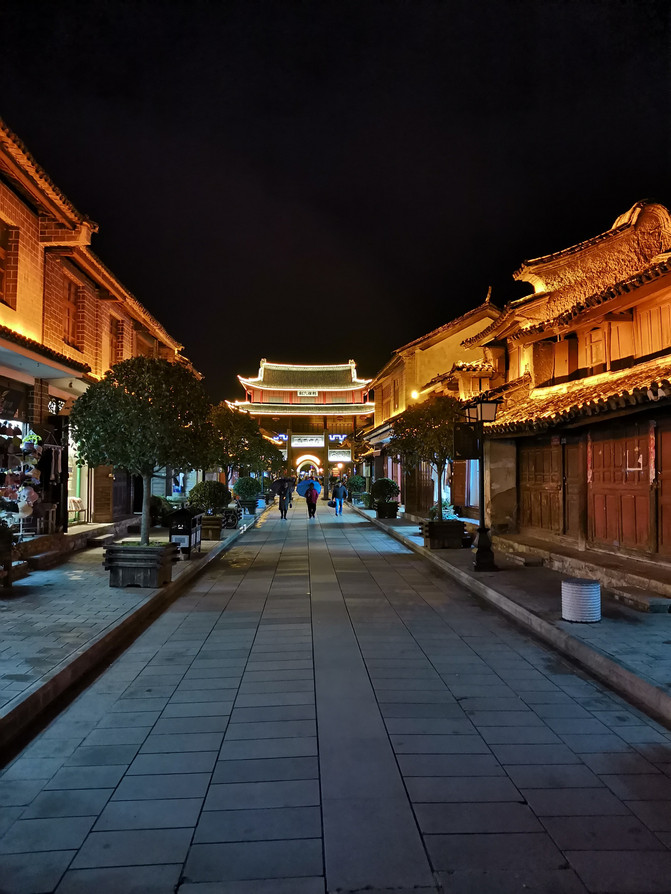
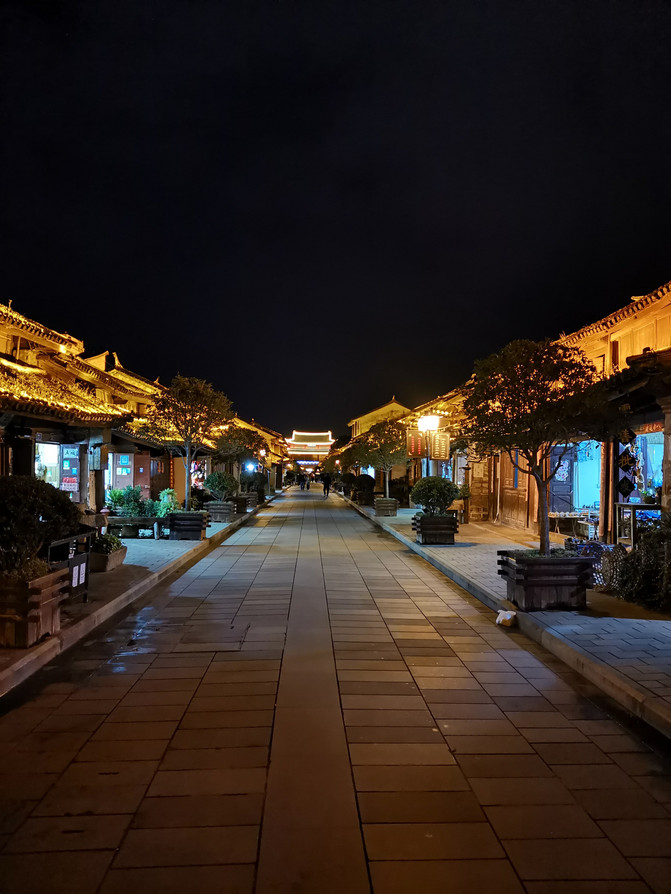

In the afternoon, after visiting Weibao Mountain, the birthplace of Nanzhao, I returned to Weishan Ancient City for dinner. After dinner, I took advantage of the short gap before returning to Dali to stroll through the streets of Weishan Ancient City in the night, and headed south along the main street from Gongchen Tower to Xinggong Tower.
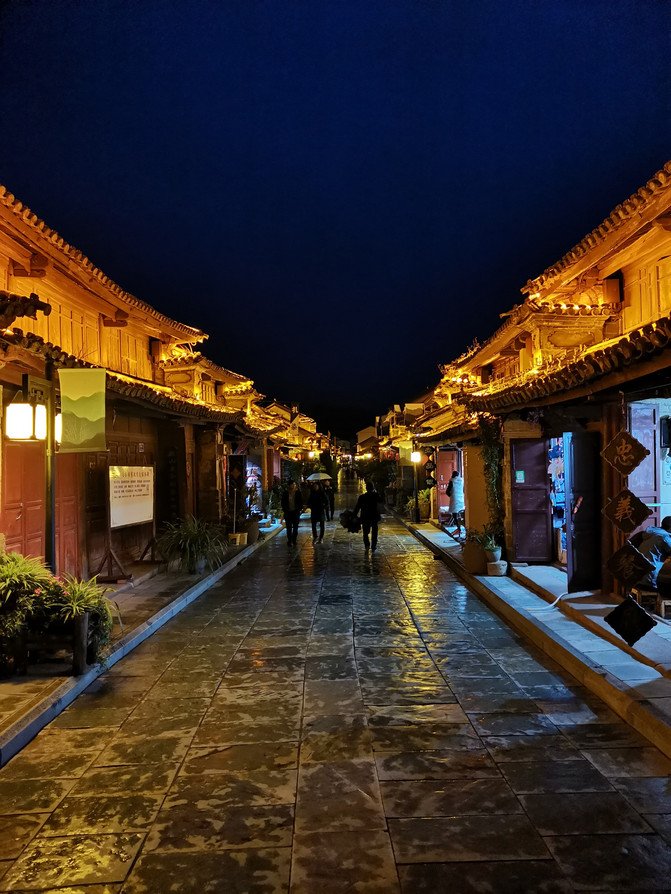
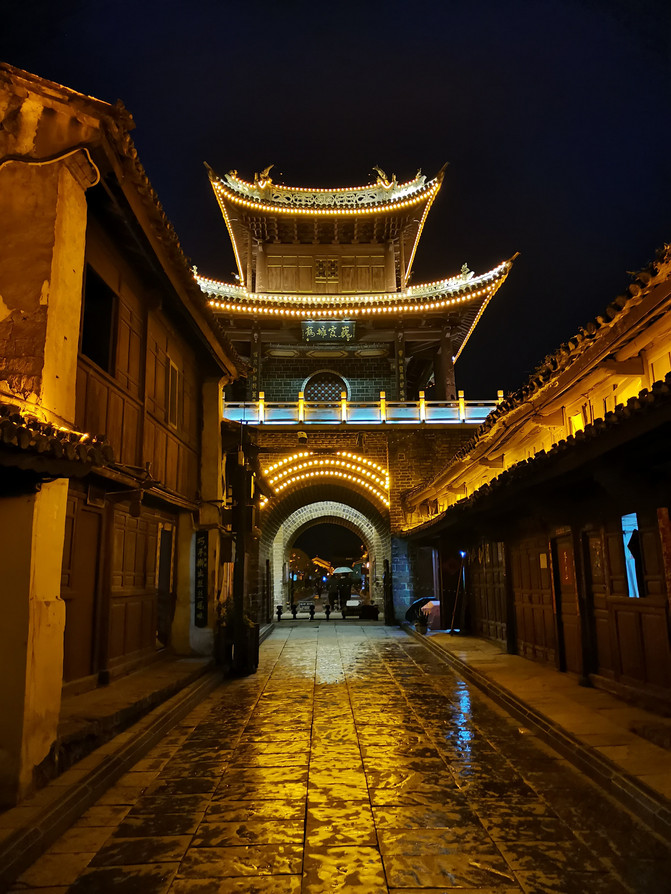
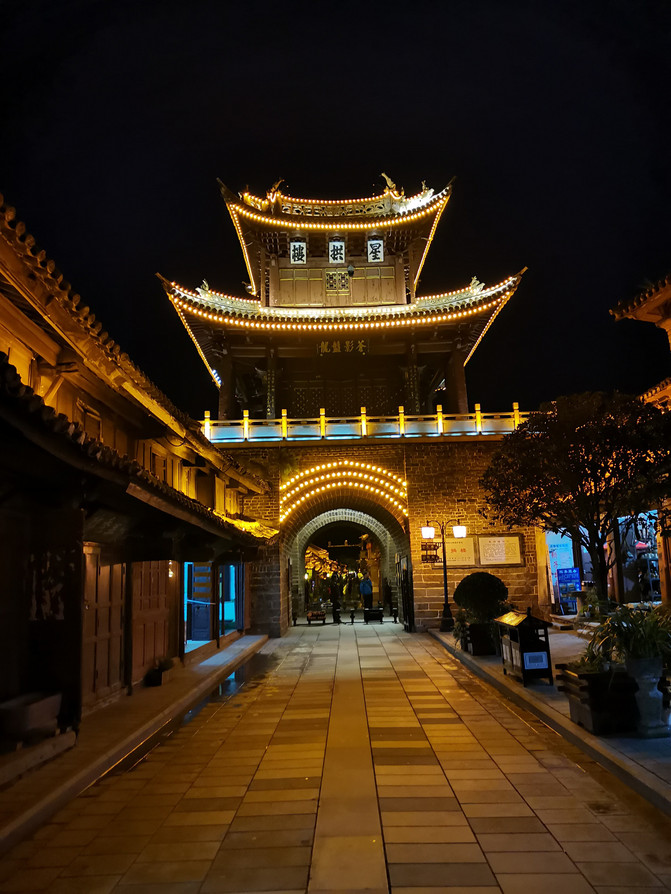
With the lights dim, the night view of Weishan Ancient City has a unique warmth and wildness.
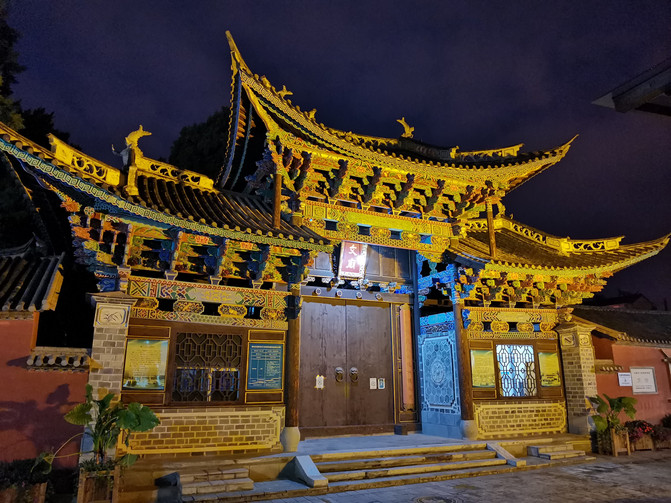
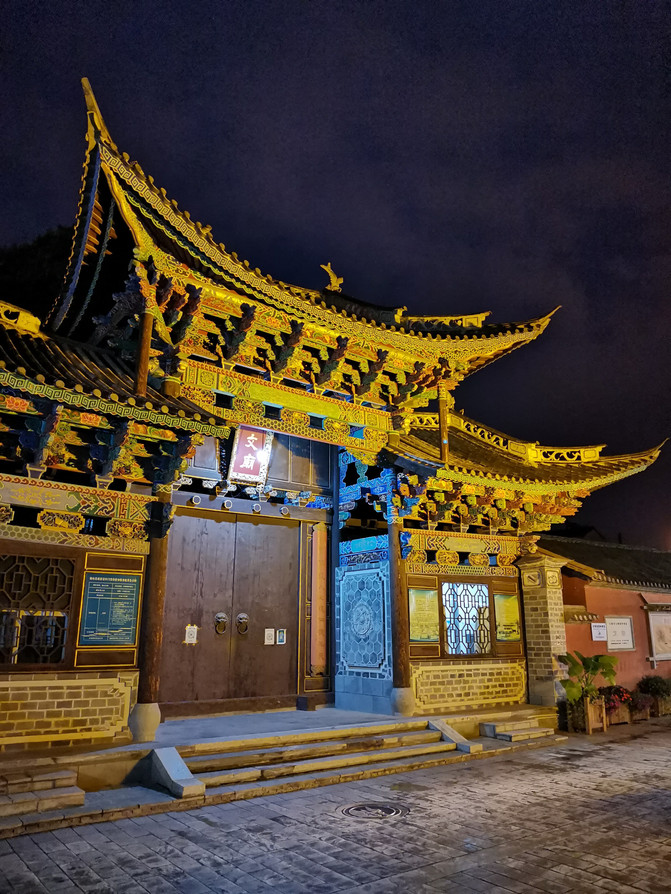
Not far west from Xinggong Tower, you will come to the door of Weishan Confucian Temple. Under the bright yellow street lights, the gate of Weishan Confucian Temple with carved beams and painted buildings is beautiful.
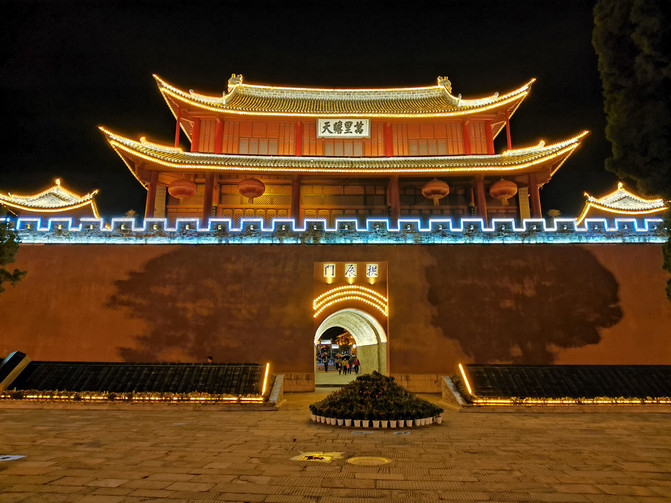
The respect for knowledge and culture makes Weishan, a border city on the southwest plateau, desolate, gentle and gentle, calm, and endless historical context.
Previous Article:Dali Beautiful Tour ~
Next Article:Tips for the strongest four-day tour in Dali
